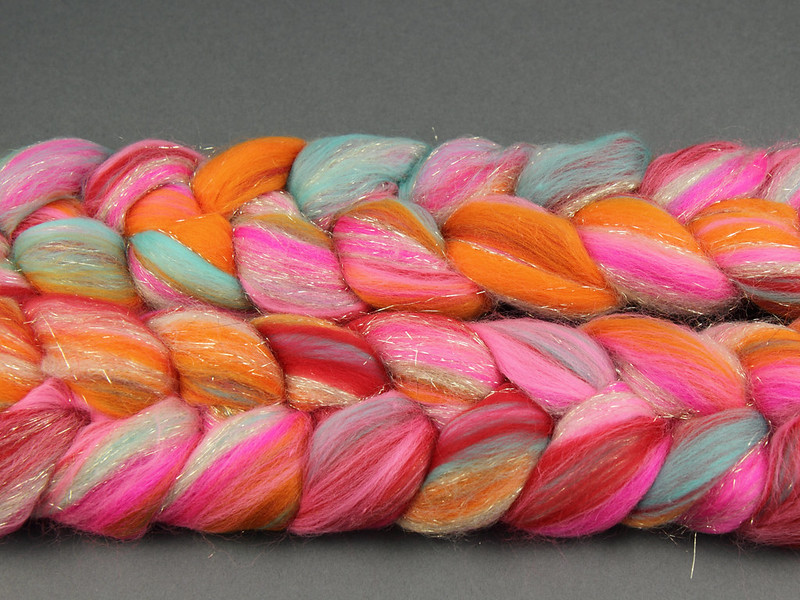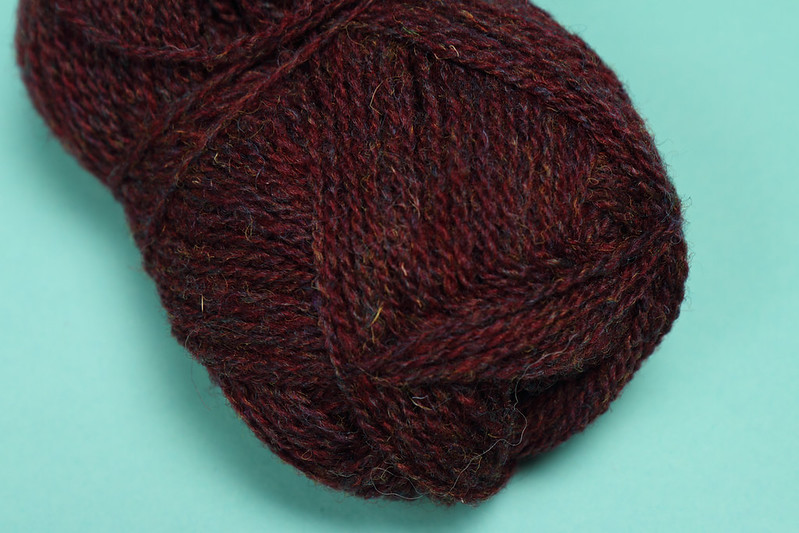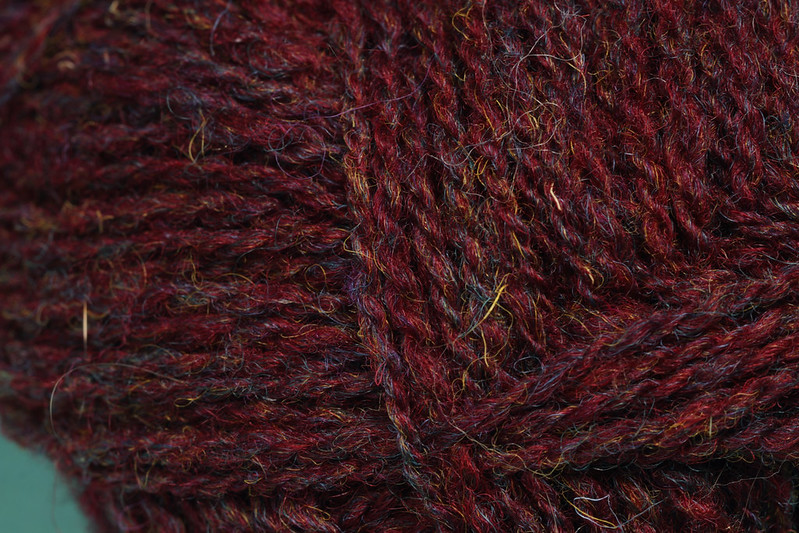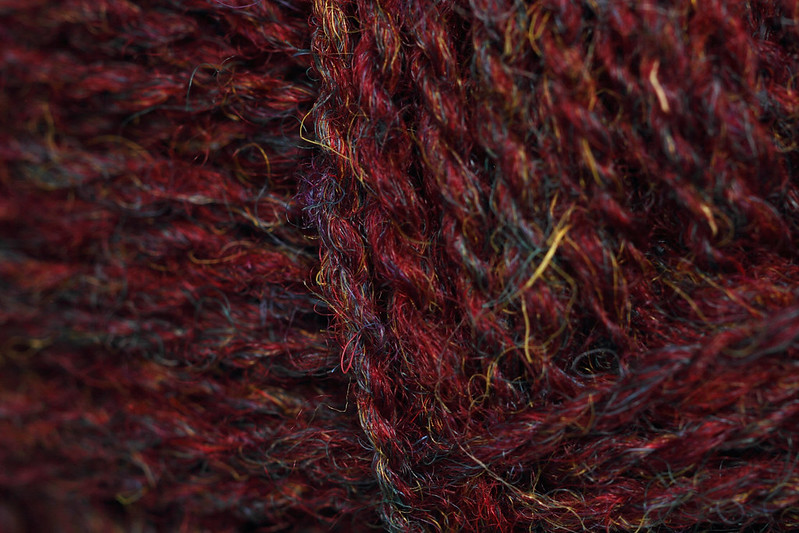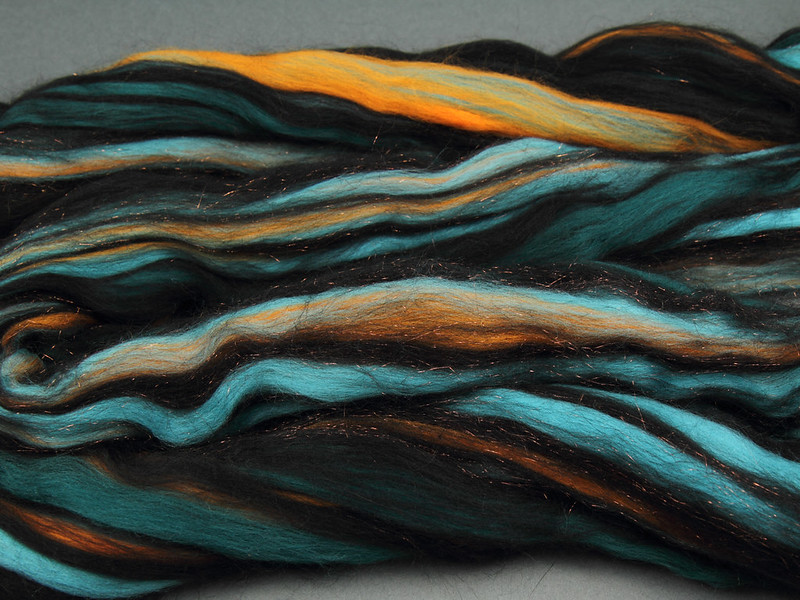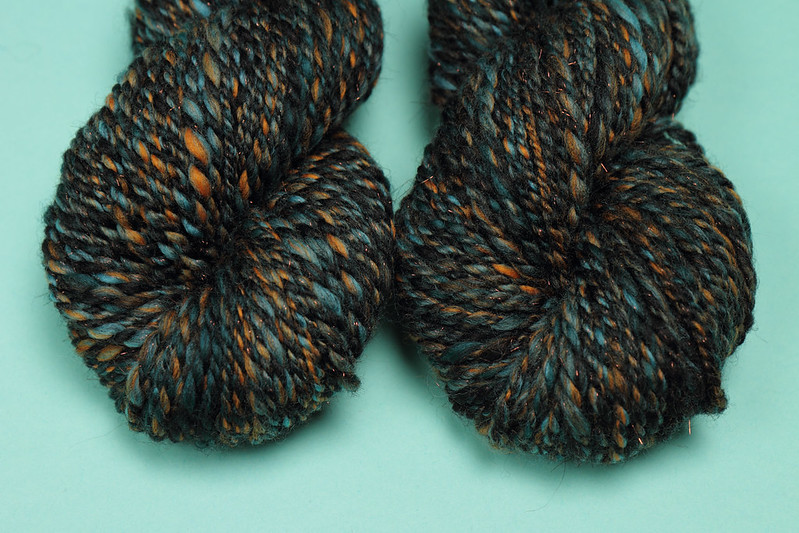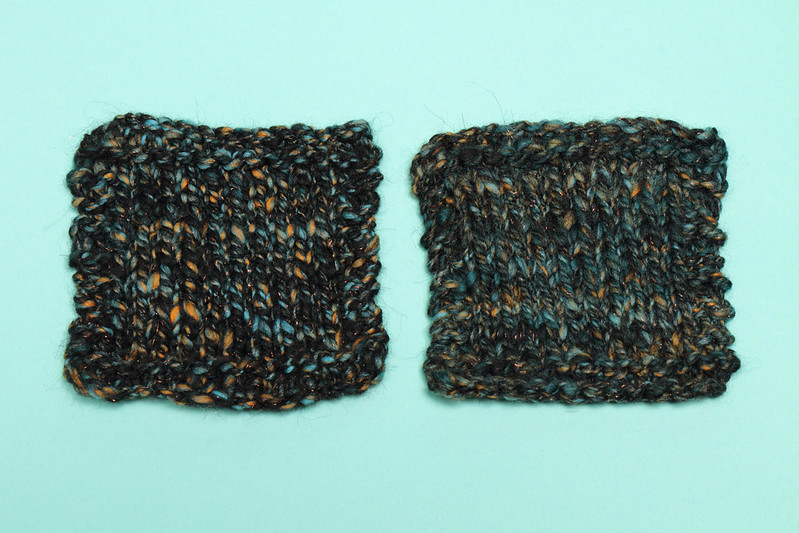Following on from our last post introducing Rebel Blend I wanted to give you a few ideas for different ways to spin them, and take control of colour!
It’s easy to be apprehensive about how adventurous colour combinations will work out in practice, but the unexpected colour palettes in these blends have been chosen not just to indulge our rebellious streak, oh no! Rebel Blend proudly follows the finest traditions of Tweed.
I have a profound love of and fascination with Tweed yarns and their extraordinary depth, complexity and richness of colour. These are created by blending fibres of many different colours to achieve the finished shade, and the component colours that make up each shade will often surprise you. To demonstrate, let’s take a look at this ball of the humble, but much loved Jamieson & Smith 2ply Jumper Weight yarn in dark reddish purple, which has been created in such a manner.
The yarn has a heathered appearance, and with the naked eye we can make out some blue and yellow tones in with the dark red.
With a macro lens we can start to see that other colours make up this complex shade.
Go even closer and it becomes evident that dark red doesn’t even make up the majority of the fibres in this blend. I can see maroon, bright red, yellow, sea green, purple and blue.
Who’d have thought such an elegant, classic shade could be formed of so many bright and clashing colours?
Rebel Blend is blended very gently, with distinct bands of colour. This gives you several different options for colour handling: You can deliberately seperate the colours; combination draft for a marledor flecked yarn; or blend them further on a blending board or drum carder for a tweed effect.
To give you an idea of the effects you can create with the same shade (and also because I couldn’t wait to get my hands on it), I took a braid of ‘Patina’ and drafted it in two different ways.
I created two 2 ply chunky yarns, using half a braid for each. For the yarn on the left I was aiming for a barber pole effect by roughly stripping the bright colours from the black, giving me two equal piles of fibre which I spun separately and plied together. For the yarn on the right, I simply spun the fibre end-to-end, combination drafting to blend the colours as much as possible.
The differences between these two yarns are not so obvious in the skein, but become much more apparent when knitted.
The swatch for the barber pole style yarn (left) appears black with large brightly coloured flecks, almost marled in appearance. Meanwhile, the combination drafted swatch has an overall dark verdigris tone with smaller, more subdued flecks in a range of tones.
It’s easy to see how with further blending, this would become a beautifully subtle grey-green tweed – a million miles away from the tangerine and turquoise that dominate the unspun fibre! I’m going to have to give it a go aren’t I?
